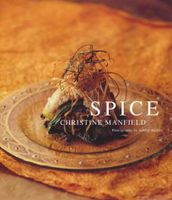Advertisement
Cassia
Published 1999
The Indian name for the outer bark of the cassia tree is ‘dalchini’ or ‘wood of China’. In fact, although cultivated in China and used in its cooking since 200bc, cassia is from a camphor laurel native to Assam in north-eastern India and to Burma. Cassia appears most commonly in Chinese, Vietnamese and Indian savoury cooking. It is used in a similar fashion to cinnamon, to which it is related, and is often confusingly referred to as Chinese cinnamon. Much harder and coarser than cinnamon, however, cassia has a more pronounced pungency and an intriguing but less-delicate flavour. It is an essential flavouring in many Chinese preparations, such as Chinese Five-spice Powder, red-braising stocks and tea-smoking. If a recipe asks for ground cassia, make an exception to the rule and purchase a small quantity of the spice already ground as the toughness of the bark will destroy any domestic grinding machine. The leaves of the cassia tree are also used in Indian cooking to flavour curries, rice and lentils in the same way a bay leaf is used in European dishes. Available: Asian food stores (look for dried cassia leaves in Indian food stores).


